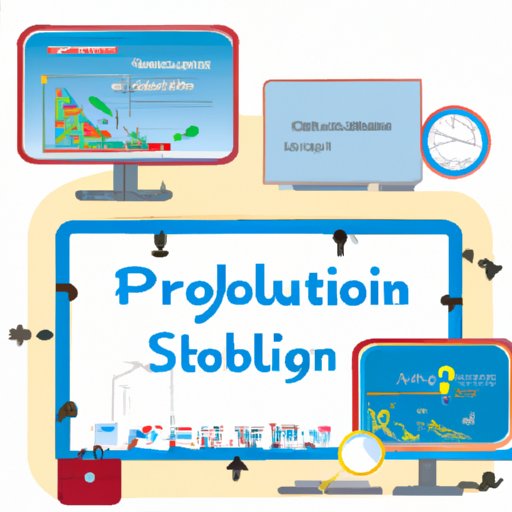Introduction
Problem-solving is a critical skill in any profession. Whether it’s a business challenge, a technical issue, or a personal dilemma, the ability to identify, break down, and strategize solutions can make all the difference. This article provides an overview of the problem-solving process, as well as the benefits of taking the time to work through solutions strategically.
Identify the Problem
The first step in solving any problem is to identify the root cause. This requires taking the time to really understand what is causing the issue. Questions to consider include: What is the source of the problem? Are there any underlying causes? How has the problem evolved over time? Answering these questions can help you get to the heart of the matter and develop a plan for resolution.
It’s also important to consider the impact of the problem. Who or what is affected? What are the consequences of not addressing the issue? Understanding the scope of the problem can help you prioritize solutions and determine the best course of action.
Break It Down
Once you have identified the problem, it’s time to break it down into more manageable chunks. This could involve breaking down the problem into smaller components or categorizing related issues. For example, if you are trying to improve customer service, you may want to tackle one area at a time such as response times or customer education.
Prioritizing steps is also important for maximum efficiency. When developing a plan for solving the problem, it’s helpful to prioritize tasks based on importance and urgency. This will help you stay focused and ensure that you are tackling the most important issues first.
Brainstorm Solutions
Once you have broken down the problem into smaller pieces, it’s time to brainstorm solutions. Generate a number of potential solutions and then evaluate the pros and cons of each one. Consider the resources needed, the timeline for implementation, and any potential risks. Some solutions may be more effective than others so it’s important to weigh your options carefully.
Develop an Action Plan
Once you have identified potential solutions, it’s time to put together a step-by-step plan for implementation. Take into account resources needed for implementation, timelines, and milestones. It’s also important to consider who will be involved and how decisions will be made. Developing a plan of action can help ensure that the problem is solved in an efficient and effective manner.
Put the Plan into Action
Now that you have developed a plan, it’s time to put it into action. Implement the plan step-by-step, adjusting as necessary. Be sure to communicate regularly with those involved and provide feedback and support as needed. This will help keep everyone on track and ensure that the plan is being executed correctly.
Monitor Progress
As you start to implement the plan, it’s important to monitor progress and make adjustments as needed. Set milestones and celebrate successes along the way. This will help keep everyone motivated and on task. Regularly assessing progress will also help ensure that the plan is working and that any necessary adjustments are made.
Conclusion
Problem-solving is a critical skill in any profession. Taking the time to identify, break down, and strategize solutions can lead to successful outcomes. By following the steps outlined in this article—identifying the problem, breaking it down, brainstorming solutions, developing an action plan, putting the plan into action, and monitoring progress—you can effectively solve any problem.
(Note: Is this article not meeting your expectations? Do you have knowledge or insights to share? Unlock new opportunities and expand your reach by joining our authors team. Click Registration to join us and share your expertise with our readers.)
